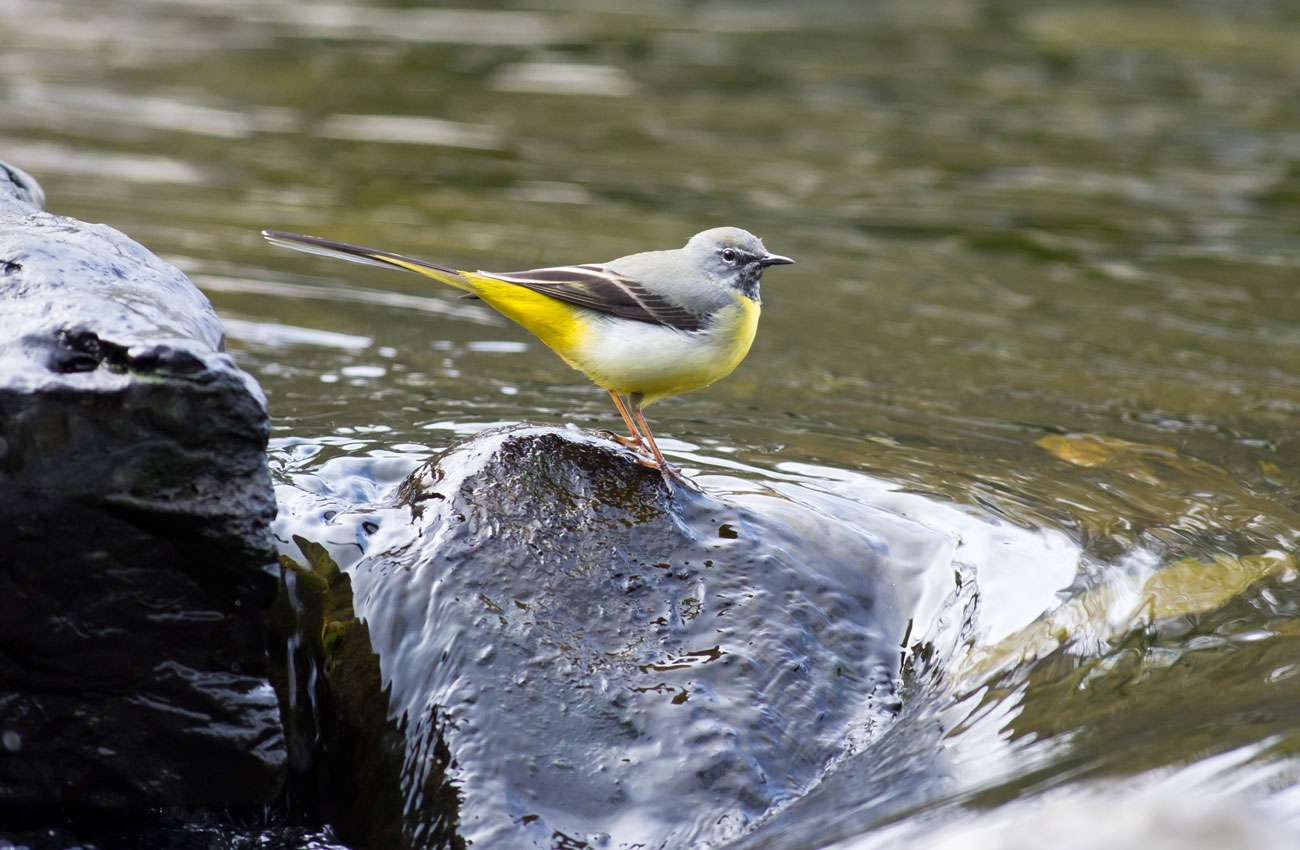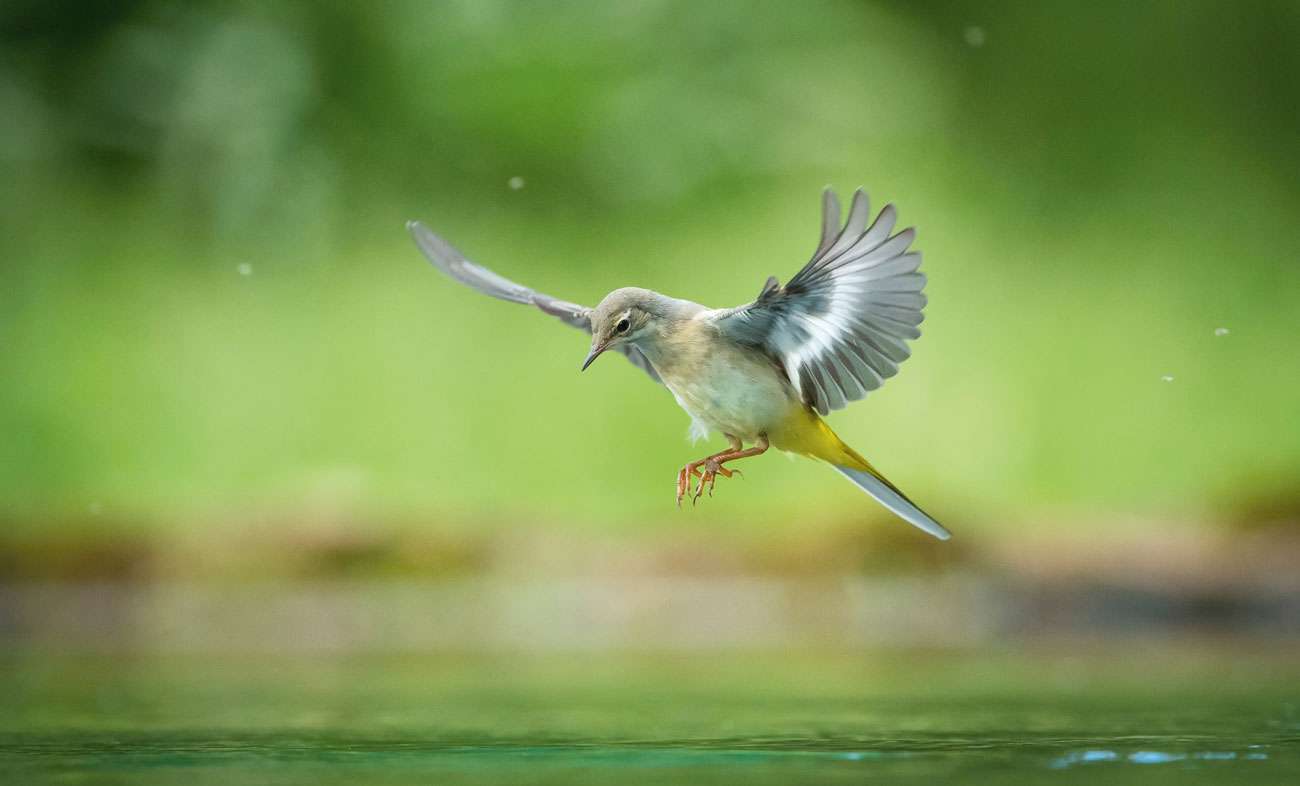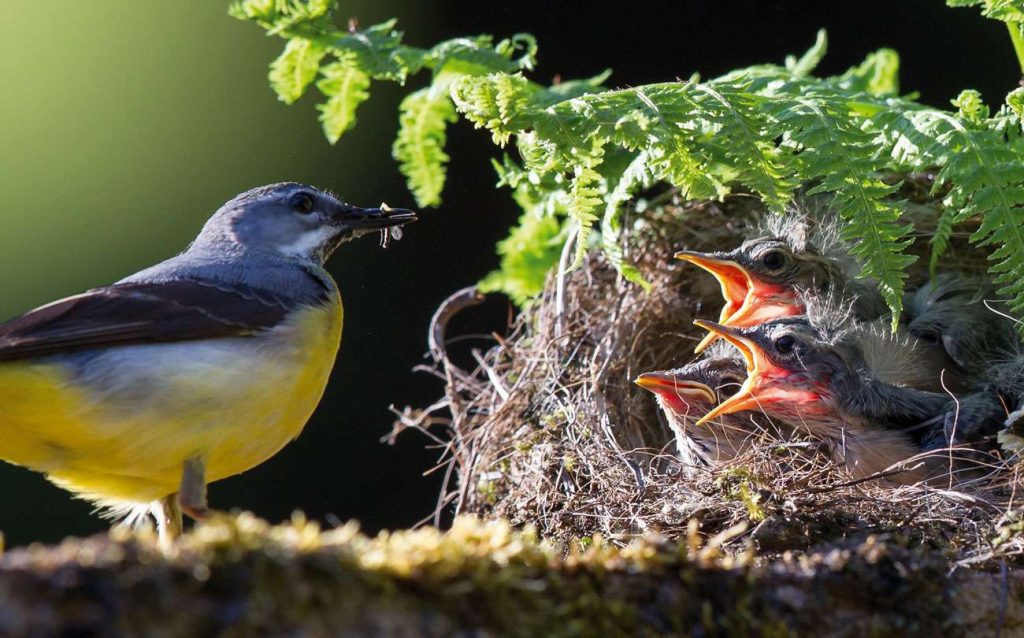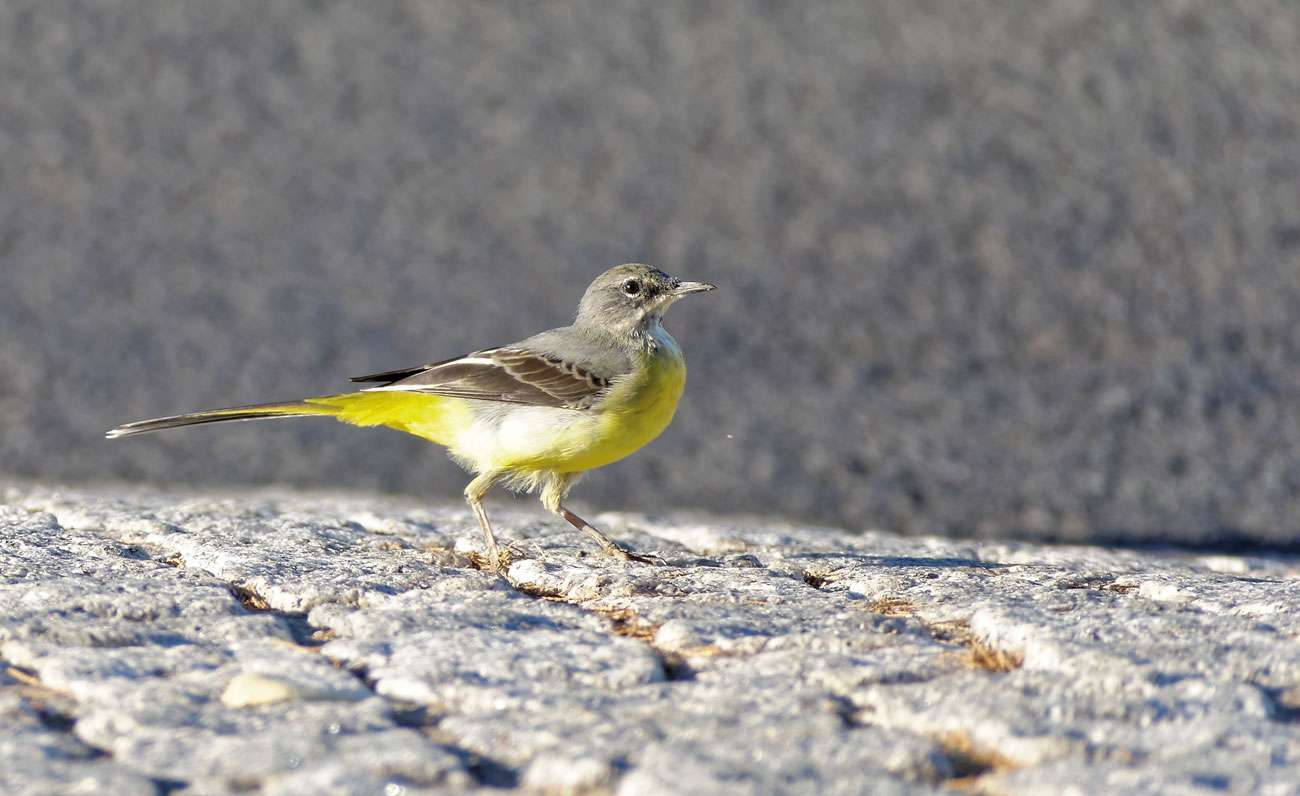
Grey Wagtail (Motacilla cinerea)
As the crowd in the centre of Cranleigh gathered around the war memorial on Remembrance Sunday a stray note suddenly broke the silence.
It was not an accidental emission from a nervous member of the band but the sharp, high-pitched and far carrying call of another village resident who is easily overlooked.
He was doing a flypast while heads were bowed. It was as if he was honouring our 157 victims of the first and second world wars whose names are commemorated on the limestone cenotaph.
I opened my eyes and looked up as the long-tailed bird bounded by at roof height and gave another call.
It was a Grey Wagtail. This species is a scarce bird in and around the village but one often seems to put in a welcome appearance at this time of year when the traffic is forced to a halt and we get two-minutes peace in which to ponder on the sacrifice of those who have died for our freedom.

Grey Wagtail (Motacilla cinerea)
In reality this bird is around most of the time but our noisy lives miss him in the day-to-day bustle.
Come November and the adult male’s black bib of summer has faded. But the lemon yellow of his underparts shines on. He retains a white stripe through the eye and another stretching down from the base of his bill to his shoulder.
The female is drabber but the actions of all pairs are bright when they are walking around- they do ‘what it says on the tin’. In this case – wag tails, just like the more commonly seen, and tamer, Pied Wagtails that often frequent Stocklund Square and our playing fields.
Wagtails’ names are a bit confusing for some, and no wonder.
There is the Pied Wagtail that looks grey, black and white. Then there is the summer migrant Yellow Wagtail that is often mostly brown and comes with a variety of coloured headgear including black, blue and grey. And then the Grey Wagtail whose body is half yellow.

Grey Wagtail (Motacilla cinerea)
Grey Wagtails give us a slice of mountain and moorland on our own doorstep. They are the birds you can expect to see actively hunting for flies from boulder islands in the streams and rivers of Dartmoor or Exmoor. They remind me of happy holidays.
Here they manage to survive along our much slower-flowing Cranleigh Waters, its tributaries, ditches and small ponds.
We have probably no more than a dozen pairs in Cranleigh and Ewhurst but there are usually a couple to view around the Cranleigh Sewage Works. You may have to pick them out from over 70 of their Pied Wagtail cousins though.
Another lifeline for them are the large rooftop gutters of our shops which attract enough insects to entice Grey Wagtails for frequent visits. Some have become more urbanised, breeding in Surrey town centres where the pickings are richer.

Grey Wagtail (Motacilla cinerea)
It’s a far cry from the two World Wars, when Grey Wagtails were very much scarcer in our county. They did not breed here until 1893 and were known in those days as migrants and winter visitors from the north and west.
But all is not rosy for this pretty bird. As Remembrance Sunday reminds us, life is precious, and while the Grey Wagtail has enjoyed an expansion of its range, and survival, it is nevertheless on the red list of conservation concern. We cannot take the future for granted.
However I will not be following the habit of an old birding friend of mine who swore he always took a hammer and chisel with him on his walks.
When I asked him why he said these were to chip out a brick in any stream or river bridge he came across and so give any passing Grey Wagtail a ready opportunity to build its nest. But perhaps, if you own a bridge or are responsible for its welfare, you could give this bird a helping hand too…
Twitter – @Crane_Spotter
Click here to see all of Robin Stride’s previous Crane Spotters.











